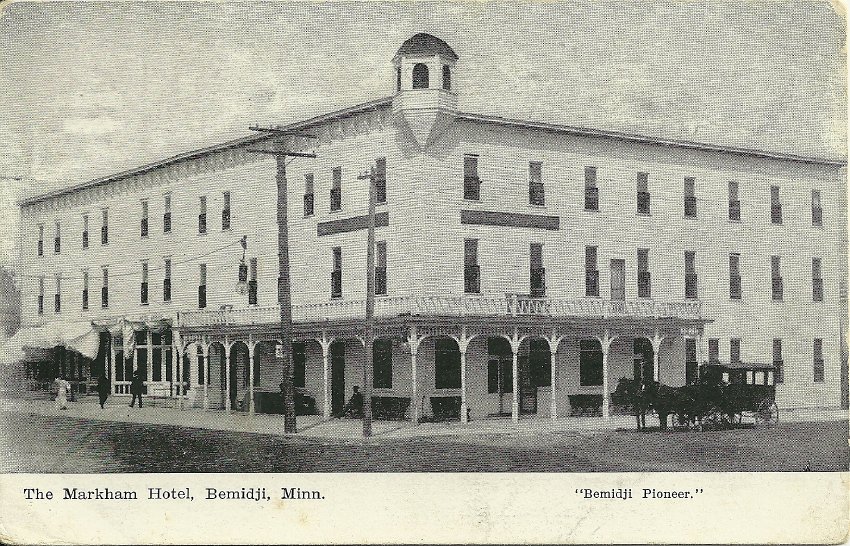📬 Wish You Were Here: THE History of Postcards
- Emily Thabes
- Oct 1
- 4 min read
Today, October 1, is World Postcard Day — a holiday that celebrates one of the most beloved (and enduring) forms of communication. At the Beltrami County History Center, we know postcards aren’t just souvenirs. They’re tiny pieces of history that carry art, humor, advertising, propaganda, and personal stories across decades.
Tonight from 4–7 PM, join us for our Postcrossing event. Bring postcards to trade, browse new and vintage cards for sale, and see treasures from our collection — including the ones in this post. While you’re here, let’s take a journey through postcard history.
📸 Postcards & the Birth of Photography by Mail
The very first government-issued postcard debuted in Austria in 1869, thanks to postal reformer Emanuel Herrmann (World Postcard Day). Within a few years, countries across Europe and the United States followed suit. By the 1893 Chicago World’s Fair, postcards had officially gone from experiment to obsession (New York State Library).
Photographers were quick to seize the opportunity. Local studios produced postcards of hotels, main streets, parades, and landmarks, such as the Markham Hotel in Bemidji (above, circa 1900; below, circa 1940-1960). These weren’t just pretty pictures — they became permanent records of places that sometimes no longer exist. In many towns, postcards are the only surviving images of lost buildings. The Markham building is now owned and operated by one of our museum's sponsors, Kraus-Anderson.
🌾 Everyday Life — and How It Was Framed
Not every postcard showed polished architecture. Many turned their lenses toward people, labor, and local culture. Our hand-tinted card of wild rice harvesting in northern Minnesota (1909) is part of a genre that sold “local color” to outsiders.

Cards like this are complex: they show traditions like ricing, but often through the romanticized or commercial gaze of a publisher. Historians remind us that postcards don’t always reflect communities on their own terms — sometimes they reinforced stereotypes (Rare Historical Photos). Still, these cards document cultural practices that might otherwise have gone undocumented.
✉️ Wartime Postcards: Proof of Life
By the early 20th century, postcards had become indispensable during wartime—soldiers in World War I sent them home as quick reassurances of survival. Governments used them to spread patriotic messages, rally enlistment, and sell war bonds. They were cheap, fast, and perfect for censorship! Entire lines could be struck out before a card was mailed (The Past).
In this way, postcards lived double lives: personal tokens of love and longing, and powerful tools of propaganda.

🌍 Wish You Were Here: Tourism & the Golden Age
The years from 1898 to 1915 are often referred to as the Golden Age of Postcards (University of Maryland Libraries). This was the era of “Greetings From…” cards, where every city and resort wanted a postcard identity. Bemidji, of course, eventually leaned into Paul Bunyan and Babe the Blue Ox.

Postcards were the Instagram of their day: proof that you had been somewhere, paired with a quick message home. They were the perfect blend of image and text, showcasing local pride while drawing in outsiders (Edinburgh Centre for the Study of Modern Conflict).
🗳️ Politics, Promotion & Everyday Advertising
Postcards weren’t just for vacations. Politicians mailed them to voters, businesses used them for advertising, and nightclubs printed custom cards to lure customers — like this one from Bemidji’s Last Resort.

They were the ultimate multipurpose medium: part letter, part billboard, part collectible. As one scholar puts it, postcards were “the first social network” (Lydia Pyne, Postcards: The Rise and Fall of the First Social Network).
🗂️ Why Postcards Matter
Today, postcards may feel quaint in the age of email and Instagram. But for historians, they remain priceless:
They capture buildings and streetscapes that may no longer exist (NYPL).
They preserve cultural practices and representations (truthful or otherwise).
They document personal networks through postmarks, addresses, and inscriptions.
In short, postcards are artifacts that reveal who we were, how we traveled, what we valued, and how we wanted to be perceived.
✨ Celebrate With Us
Whether you collect them, trade them, or enjoy flipping through them, postcards carry stories worth sharing. Join us tonight from 4–7 PM at the Beltrami County History Center for our World Postcard Day Postcrossing event. Bring your own cards, discover new ones, and see history in the palm of your hand.
Because every postcard is more than ink on paper: it is a message that someone, somewhere, once wished you were here.











MMOexp Skull and Bones: Legendary Fortresses and Factional Battles
Year 2 Season 2 introduced new Legendary Fortresses guarded by elite enemies. These heavily fortified locations are some of Skull and Bones Items the most challenging PvE content in the game, but defeating their commanders offers a chance to obtain Ascension Modules as rare drops. In addition, faction-based naval skirmishes between rival pirate syndicates occasionally drop Ascension Module fragments, which can be combined into full modules.
Elite Seasonal Contracts
Ascension Modules are sometimes rewarded for completing elite-tier contracts issued by Pirate Lords or regional bosses. These contracts are multi-stage and often require completing objectives under strict conditions, such as time limits or full combat loads.
Completing a contract chain not only grants you…